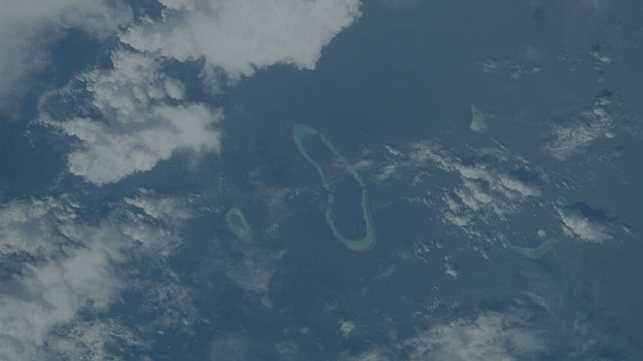China Puts Anti-Stealth Radar System on Strategic S. China Sea Island

China's military has made a major upgrade to one of its many island bases in the South China Sea, according to a UK think tank. On Triton Island in the Paracels, a little-developed outpost at the archipelago's western edge, China appears to have installed an advanced stealth-penetrating radar system, according to Chatham House's John Pollock and Damien Symon. The project was first spotted last year, but was initially assumed to be an airstrip.
A new octagonal structure on Triton appears to be a synthetic impulse and aperture radar (SIAR) array, similar to installations on China's bases on Subi Reef and Hainan island. SIAR is a VHF-band radar system that uses advanced signal processing to find airborne targets in ways that VHF systems have historically been unable to do. VHF's long wavelength makes it imprecise by its nature, and it is vulnerable to surface clutter and interference from everyday radio traffic. Chinese researchers claim to have refined the technology enough for useful tracking and targeting of aircraft. Since stealth aircraft are designed to defeat conventional UHF, L and S band radars, lower frequency VHF-band radar could in theory provide adequate early warning of an inbound attack.
According to Chatham House, Triton is a strategic location for such a system, as it fills a geographic gap between the VHF-band radars on Subi Reef and Hainan. The system is line-of-sight, so to create continuous coverage it is necessary to install overlapping stations, aerospace specialist J. Michael Dahm of the Mitchell Institute told Chatham House.
A second radar tower is under construction next to the SIAR array, along with a pad that appears consistent with previous designs for mobile anti-ship missile staging areas.
Triton is strategically significant for China. It is located near to offshore oil and gas prospects in the Vietnamese exclusive economic zone, which Chinese state oil company CNOOC attempted to tap in 2014. After a high-profile clash at sea, the standoff ended in the withdrawal of the Chinese rig.
Vietnam controlled much of the Paracel group until 1974, when South Vietmanese forces lost a naval battle with a lightly-armed flotilla of PLA Navy patrol boats. China quickly moved to occupy the archipelago and has held it ever since.
